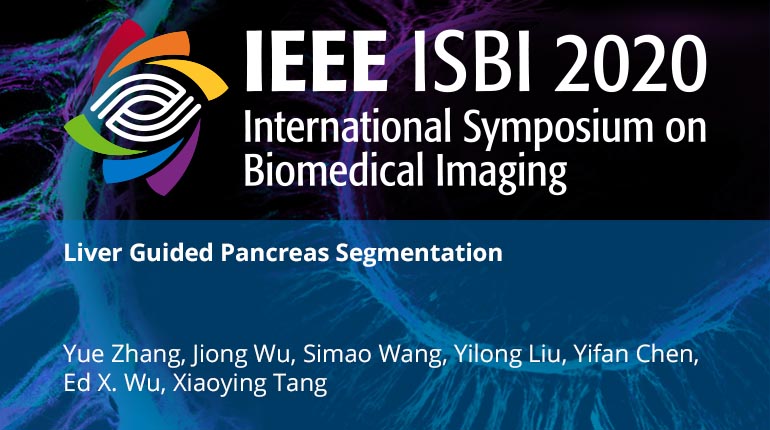
Already purchased this program?
Login to View
This video program is a part of the Premium package:
Liver Guided Pancreas Segmentation
- IEEE MemberUS $11.00
- Society MemberUS $0.00
- IEEE Student MemberUS $11.00
- Non-IEEE MemberUS $15.00
Liver Guided Pancreas Segmentation
In this paper, we propose and validate a location prior guided automatic pancreas segmentation framework based on 3D convolutional neural network (CNN). To guide pancreas segmentation, centroid of the pancreas used to determine its bounding box is calculated using the location of the liver which is firstly segmented by a 2D CNN. A linear relationship between centroids of the pancreas and the liver is proposed. After that, a 3D CNN is employed the input of which is the bounding box of the pancreas to get the final segmentation. A publicly accessible pancreas dataset including 54 subjects is used to quantify the performance of the proposed framework. Experimental results reveal outstanding performance of the proposed method in terms of both computational efficiency and segmentation accuracy compared to non-location guided segmentation. To be specific, the running time is 15 times faster and the segmentation accuracy in terms of Dice is higher by 4.29% (76.42% versus 80.71%).
In this paper, we propose and validate a location prior guided automatic pancreas segmentation framework based on 3D convolutional neural network (CNN). To guide pancreas segmentation, centroid of the pancreas used to determine its bounding box is calculated using the location of the liver which is firstly segmented by a 2D CNN. A linear relationship between centroids of the pancreas and the liver is proposed. After that, a 3D CNN is employed the input of which is the bounding box of the pancreas to get the final segmentation. A publicly accessible pancreas dataset including 54 subjects is used to quantify the performance of the proposed framework. Experimental results reveal outstanding performance of the proposed method in terms of both computational efficiency and segmentation accuracy compared to non-location guided segmentation. To be specific, the running time is 15 times faster and the segmentation accuracy in terms of Dice is higher by 4.29% (76.42% versus 80.71%).
 Cart
Cart Create Account
Create Account Sign In
Sign In





